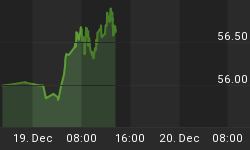T.S. Eliot might have been off by a couple of months. It looks as though June might turn out to be the cruelest month instead of April. Earlier this month, the Buffalo Fed branch and the Philly Fed reported that manufacturing activity had deteriorated in their regions. Today the Richmond Fed corroborated the message from its regional brethren with a report showing that its composite manufacturing survey index dropped to minus 12 in June from minus 3 in May. At the same time that Richmond was reporting, the Conference Board released its June consumer confidence, or lack thereof, report. Wow! Gasoline at 4 bucks a gallon really knocks the wind out of consumers' sails, to mix metaphors. Chart 1 shows that the June reading on the present-conditions component of consumer confidence dropped to its lowest level since September 2003. But Chart 1 also shows that the expectations component of consumer confidence fell in June to its lowest level in the history of the series. Folks are so bummed out that they don't even want to take a vacation (see Chart 2), much less buy a house or a car.
Chart 1
Chart 2
Not only are high gasoline prices getting people down, but the job market also apparently is a downer. The spread between the percentages of respondents saying that jobs are hard to get minus the percentage saying that jobs are plentiful hit its highest level since December 2003. Chart 3 shows that there is a high correlation, 0.87, between this spread and the level of the unemployment rate. So, you might want to prepare for some pyrotechnics on Thursday morning, July 3.
Chart 3
Case-Shiller House Price Index Declines - Light at the End of the Tunnel?
The Case-Shiller Composite 20 house price index dropped at an annual rate of 18.5% seasonally adjusted (by me) in April compared with March. This was a relatively sharp slowdown in the rate of descent as the March month-to-month annualized decline was 24.2%. On a year-over-year basis, this house price index descended at its fastest rate to date, 15.3% vs. 14.3% in March (see Chart 4). If, in fact, the slowdown in the rate of price decreases on a month-to-month basis is signal, not noise, then perhaps we are nearing an inflection point in house prices. That is, the trend in house prices will still be down for months to come, but the rate at which these prices are declining might be moderating. This would be "less bad" news for households and for holders of home-mortgage-related debt. But before these mortgage holders pop the champagne corks, keep in mind that the Case-Shiller home price index screens out foreclosure auction sales (hat tip on this point to Eugene Xu of Deutsche Bank Securities via Michael Nicoletti, an independent housing market analyst). Also keep in mind, as can be seen in Chart 4, that the month-to-month changes in the price index are "noisy."
Chart 4















